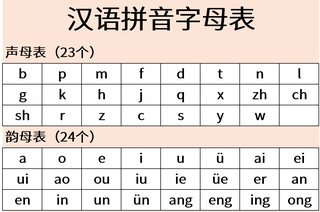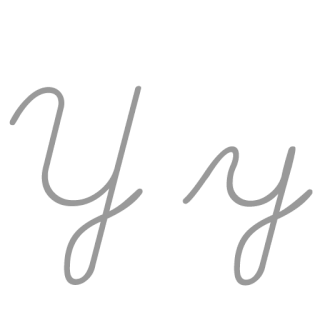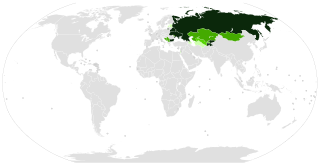Related Research Articles

Hanyu Pinyin, often shortened to just pinyin, is the official romanization system for Standard Mandarin Chinese in Mainland China, and to some extent, in Taiwan and Singapore. It is often used to teach Mandarin, normally written in Chinese form, to learners already familiar with the Latin alphabet. The system includes four diacritics denoting tones, but pinyin without tone marks is used to spell Chinese names and words in languages written in the Latin script, and is also used in certain computer input methods to enter Chinese characters. The word Hànyǔ literally means "Han language", while Pīnyīn (拼音) means "spelled sounds".

Y, or y, is the twenty-fifth and penultimate letter of the ISO basic Latin alphabet and the sixth vowel letter of the modern English alphabet. In the English writing system, it mostly represents a vowel and seldom a consonant, and in other orthographies it may represent a vowel or a consonant. Its name in English is wye, plural wyes.

Hakka form a language group of varieties of Chinese, spoken natively by the Hakka people throughout Southern China and Taiwan and throughout the diaspora areas of East Asia, Southeast Asia and in overseas Chinese communities around the world.

A digraph or digram is a pair of characters used in the orthography of a language to write either a single phoneme, or a sequence of phonemes that does not correspond to the normal values of the two characters combined.

The Syriac alphabet is a writing system primarily used to write the Syriac language since the 1st century AD. It is one of the Semitic abjads descending from the Aramaic alphabet through the Palmyrene alphabet, and shares similarities with the Phoenician, Hebrew, Arabic and Sogdian, the precursor and a direct ancestor of the traditional Mongolian scripts.
Teochew or Chaozhou is a dialect of Chaoshan Min, a Southern Min language, that is spoken by the Teochew people in the Chaoshan region of eastern Guangdong and by their diaspora around the world. It is sometimes referred to as Chiuchow, its Cantonese rendering, due to the English romanisation by colonial officials and explorers. It is closely related to some dialects of Hokkien, as it shares some cognates and phonology with Hokkien. The two are mutually unintelligible, but it is possible to understand some words.

The ʼPhags-pa script is an alphabet designed by the Tibetan monk and State Preceptor Drogön Chögyal Phagpa for Kublai Khan, the founder of the Yuan dynasty, as a unified script for the written languages within the Yuan. The actual use of this script was limited to about a hundred years during the Mongol-led Yuan dynasty, and it fell out of use with the advent of the Ming dynasty.
Guangdong Romanization refers to the four romanization schemes published by the Guangdong Provincial Education Department in 1960 for transliterating Cantonese, Teochew, Hakka and Hainanese. The schemes utilized similar elements with some differences in order to adapt to their respective spoken varieties.
Peng'im is a Teochew dialect romanisation system as a part of Guangdong Romanisation published by Guangdong Provincial Education Department in 1960. Tone of this system is based on Swatow dialect. The system uses Latin alphabet to transcript pronunciation and numbers to note tones.

Ch is a digraph in the Latin script. It is treated as a letter of its own in Chamorro, Old Spanish, Czech, Slovak, Igbo, Uzbek, Quechua, Guarani, Welsh, Cornish, Breton, Ukrainian Łatynka and Belarusian Łacinka alphabets. Formerly ch was also considered a separate letter for collation purposes in Modern Spanish, Vietnamese, and sometimes in Polish; now the digraph ch in these languages continues to be used, but it is considered as sequence of letters and sorted as such.
Cantonese Pinyin is a romanization system for Cantonese developed by the Rev. Yu Ping Chiu (余秉昭) in 1971, and subsequently modified by the Education Department of Hong Kong and Prof. Zhan Bohui (詹伯慧) of the Chinese Dialects Research Centre of the Jinan University, Guangdong, PRC, and honorary professor of the School of Chinese, University of Hong Kong. It is the only romanization system accepted by Education and Manpower Bureau of Hong Kong and Hong Kong Examinations and Assessment Authority.

Numerous Cyrillic alphabets are based on the Cyrillic script. The early Cyrillic alphabet was developed in the 9th century AD and replaced the earlier Glagolitic script developed by the Byzantine theologians Cyril and Methodius. It is the basis of alphabets used in various languages, past and present, Slavic origin, and non-Slavic languages influenced by Russian. As of 2011, around 252 million people in Eurasia use it as the official alphabet for their national languages. About half of them are in Russia. Cyrillic is one of the most-used writing systems in the world.
In orthography, a zero consonant, silent initial, or null-onset letter is a consonant letter that does not correspond to a consonant sound, but is required when a word or syllable starts with a vowel. Some abjads, abugidas, and alphabets have zero consonants, generally because they have an orthographic rule that all syllables must begin with a consonant letter, whereas the language they transcribe allows syllables to start with a vowel. In a few cases, such as Pahawh Hmong below, the lack of a consonant letter represents a specific consonant sound, so the lack of a consonant sound requires a distinct letter to disambiguate.
The Wuhua dialect is a major dialect of Hakka Chinese spoken in Wuhua County, Jiexi County, Shenzhen, eastern Dongguan, Northern Guangdong around Shaoguan, Sichuan Province, and Tonggu County in Jiangxi Province.
The Meixian dialect, also known as Moiyan dialect, as well as Meizhou dialect (梅州話), or Jiaying dialect, is the prestige dialect of Hakka Chinese. It is named after Meixian District, Guangdong.
Raoping Hakka, also known as Shangrao Hakka, is a dialect of Hakka Chinese spoken in Raoping, Guangdong, as well as Taiwan.

The Sixian dialect, also known as the Sixian accent, is a dialect of Hakka used by Taiwanese Hakkas, and it is the most spoken dialect of Taiwanese Hakka, being used in Hakka broadcasting in many public occasions. The Sixian dialect is generally spoken in northern and southern Taiwan, with main representative regions being Taoyuan and Miaoli in the north, as well as the Liudui Region in Kaohsiung and Pingtung in the south.
The Hainanese Transliteration Scheme refers to a romanization scheme published by the Guangdong Provincial Education Department in September 1960 as one of four systems collectively referred to as Guangdong Romanization. The scheme describes the Wenchang dialect spoken in Wenchang, Hainan which is considered to be the prestige dialect of Hainanese. At the time of the scheme's creation, Hainan was part of Guangdong, until it was separated to form its own province in 1988. This system utilises the Latin alphabet with superscript numbers to represent tone.
The Cantonese Transliteration Scheme, sometimes called Rao's romanization, is the romanisation for Cantonese published at part of the Guangdong Romanization by the Guangdong Education department in 1960, and further revised by Rao Bingcai in 1980. It is referred to as the Canton Romanization on the LSHK character database.

Teochew Romanization, also known as Swatow Church Romanization, or locally Pe̍h-ūe-jī, is an orthography similar to Pe̍h-ōe-jī used to write the Chaoshan dialect. It was introduced by John Campbell Gibson and William Duffus, two British missionaries, to Swatow in 1875.
References
- ↑ Chappell, Hilary (2006). "From Eurocentrism to Sinocentrism: The Case of Object Marking Constructions in Sinitic Languages". Archived from the original on 2018-11-27. Retrieved 2018-11-27– via HAL.
- ↑ "Gan (赣语 / 江西话)". Omniglot. Archived from the original on 2019-09-29. Retrieved 2019-09-14.
- 1 2 Sung, Dylan W. H. (25 April 2002). "Méixiànhuà pīnyīn fāng'àn" 梅縣話拼音方案. sungwh.freeserve.co.uk. Archived from the original on 2010-04-22.